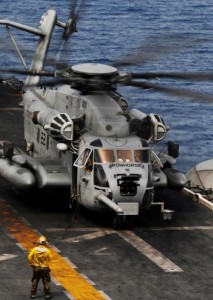The USS B ataan (LHD-5) was one of the first ships directed towards Haiti after the massive January 12 earthquake, but, once the ship arrived to serve in Operation Unified Response, the Bataan ran into a hail of criticism over it’s slow start in accepting and treating wounded Haitians. One of my USNI pals was particularly tough on the flat-deck. Why was the Bataan so slow off the mark?
ataan (LHD-5) was one of the first ships directed towards Haiti after the massive January 12 earthquake, but, once the ship arrived to serve in Operation Unified Response, the Bataan ran into a hail of criticism over it’s slow start in accepting and treating wounded Haitians. One of my USNI pals was particularly tough on the flat-deck. Why was the Bataan so slow off the mark?
Well, the MSC has a likely answer. There might have been a darn good reason why the Bataan’s medical facilities were slow to get into the game….Why? The answer is simple–Water. The Bataan didn’t have any. Though the Bataan’s embarked media didn’t make much of a peep about the shortage, off Haiti, the ship’s evaporators–rather important pieces of equipment for a steam-powered vessel–failed.
And with no water, there’s precious little a medical team can offer.
According to Cmdr Mark Pimpo, USNS Sacagawea’s (T-AKE-2) military department offi
cer in charge, the Bataan was in serious trouble:
“We also transferred more than 40,000 gallons of water to amphibious assault ship USS Bataan when both of the ship’s evaporators stopped functioning. Bataan was eventually able to get a tech rep onboard, but the water we provided made the difference,” Pimpo said.”
For the Bataan, a ship that entered the fleet in 1997, this sort of breakdown is not a good sign. But on the other hand, an evaporator failure is the sort of thing that’ll likely happen after a ship has been at sea for seven months, gets shut down…and then gets tasked to handle an unexpected contingency.
With short-notice surge deployments becoming the norm, the Navy has got to start doing some serious thinking about how it manages ship maintenance and surge availability. Are looming failures (or chronic engineering problems) getting reported up the chain-of-command during deployment? Or are they kinda close-held until after deployment when it all becomes some shipyard’s problem to deal with?
But just note…for the helpful T-AKE, this story is just another testament to how important the MSC’s T-AKE fleet has become (in such a short time, too)! These cheap, do-anything ships–with their residual fuel and liquid supply capabilities–are really pulling the Navy out of some potentially sticky situations…

Comments on this entry are closed.